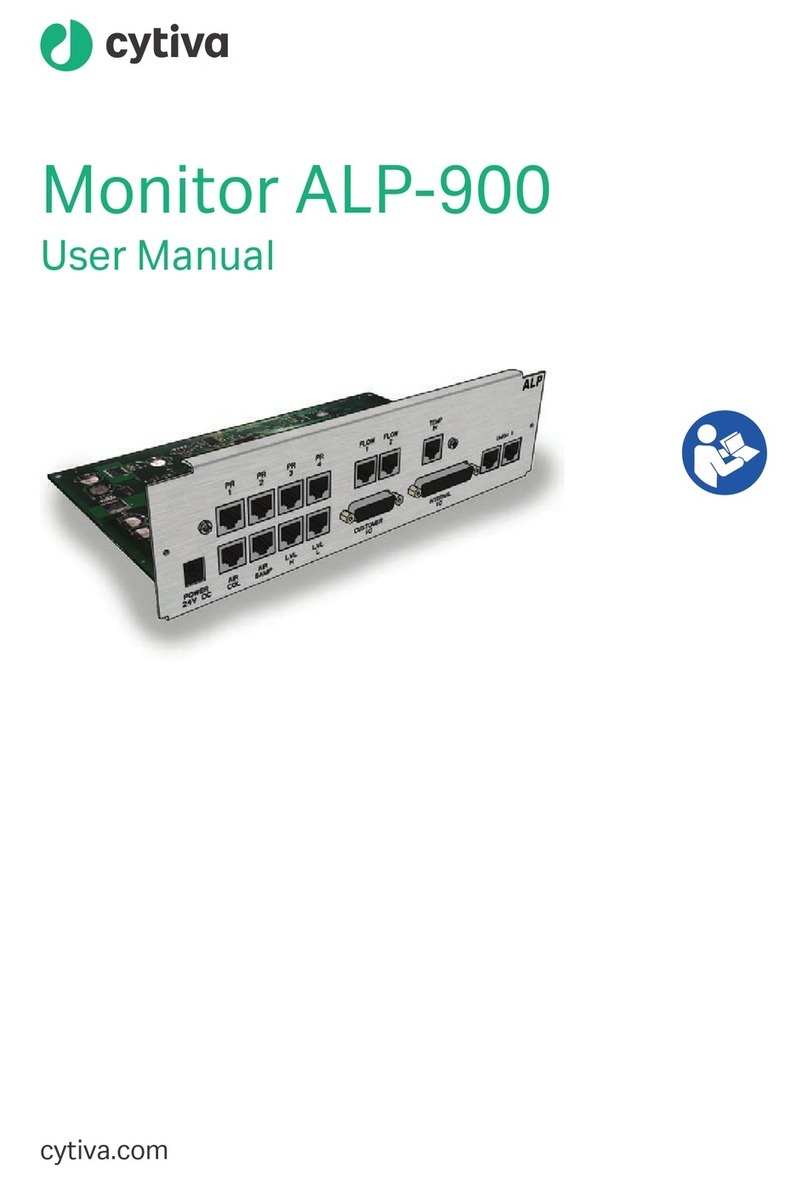
Changing conductivity flow cells
The flow cells can be changed when required. Make sure that the
system is disconnected from the mains power and de-pressurized
before disconnecting/ connecting the flow cells.
If the cell is replaced with a new flow cell, the monitor must be
calibrated with the new cell constant value which is written on the
flow cell package. See Section Calibrating the conductivity cell, .
Troubleshooting
General
When contacting Cytiva for support, access the UNICORN
Maintenance Manager in the System Control module to display the
instrument information, e.g. version number, for reference.
Step Action
1 Select System:Maintenance.
2 Select the Info tab.
3 Click the pH/Cond icon.
4 Click General.
WARNING
The electronics cabinet may only be opened by
Cytiva authorized personnel.
Faults and actions
If the suggested actions do not correct the fault, call Cytiva.
pH measurement
Fault Action
No response to pH
changes
1. Check that the electrode cable is
connected properly to the electrode.
2. The electrode glass membrane may be
cracked.
Replace the electrode.
Small response to pH
changes
1. Clean the pH electrode.
2. If the problem remains, replace the pH
electrode.
Slow pH response or
Calibration impossible
1. Check the pH electrode tip. If it is
contaminated, clean the electrode.
2. If the membrane has dried out, the
electrode may be restored by soaking it
in buffer overnight.
3. Clean the liquid junction.
Incorrect / unstable pH
reading
1. Check that the electrode cable is
connected properly to the electrode.
2. Check that the pump(s) and valves
operates correctly.
3. Check that the electrode is correctly
inserted in the flow cell and, if
necessary, hand-tighten the nut.
Fault Action
4. If air in the flow cell is suspected, tap
the flow cell or tilt it to remove the air.
Alternatively flush the flow cell with
buffer at 8 ml/min for 1/2 min.
5. Check that the pH electrode is not
broken.
6. Check that the pH electrode is
calibrated.
7. Check the slope. If it is outside the
range 80 – 105% or the asymmetry
potential deviates more than 60 mV
from 0mV, clean the pH electrode.
Recalibrate and if the problem
persists, replace the pH electrode.
8. Clean the pH electrode if required.
9. Compare the response of the pH
electrode with that of another pH
electrode. If the response differ
greatly, the electrode may require
cleaning or replacement.
10. Check that the pH electrode has been
calibrated at the correct temperature.
11. In organic solvents such as ethanol,
methanol and acetonitrile, stable pH
measurements are not possible since
dehydration of the membrane will
occur. It is recommended that the pH
electrode is not used in applications
using organic solvents. Replace the
electrode with the pH plug.
12. Clean the liquid junction.
pH values vary with
varying back-pressure
Replace the pH electrode.
Conductivity measurement
Fault Action
Incorrect or unstable
reading
1. Check that the conductivity flow cell
cable is connected properly.
2. Check that the pump(s) and valves
operate correctly.
3. If temperature compensation is being
used, check that the correct
temperature compensation factor is in
use.
4. Check that the column is equilibrated. If
necessary, clean the column.
Baseline drift or noisy
signal
1. There may be air in the flow cell. Use a
flow restrictor after the flow cell.
2. Check for leaking tubing connections.
3. Check that the column is equilibrated. If
necessary, clean the column.
4. Check the operation of the pump(s).
5. Clean the flow cell.
6 pH/C-902 Instruction 14003958 AB



























